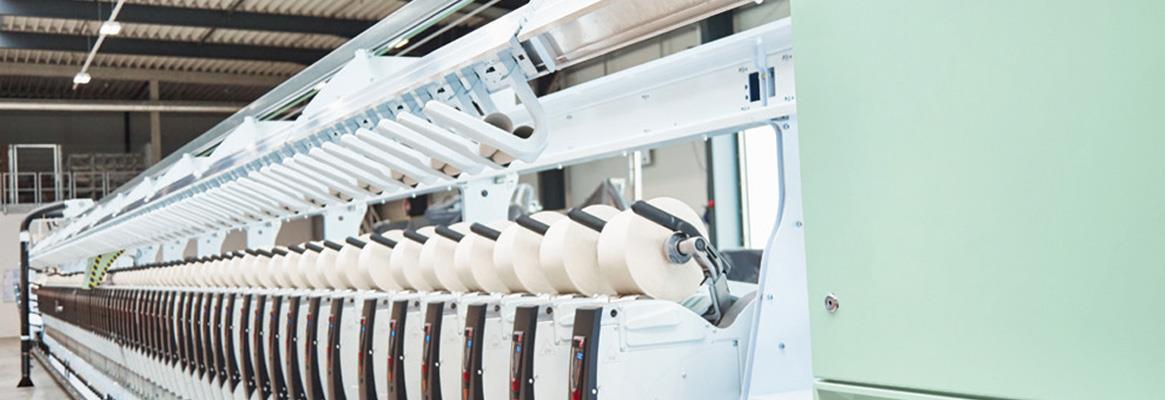With the integration of the winding machine Autoconer X6 in its portfolio, Rieter offers complete ring and compact-spinning systems from bale to package. This opens up the potential for end-to-end transparency and optimisation throughout all process steps with the spinning mill management system ESSENTIAL. The new Multilink systems with Multilot offer maximum flexibility: Up to four ring spinning machines are linked to one Autoconer and each ring spinning machine can supply a different type of yarn.
The winding machine Autoconer X6 is the missing piece of the puzzle which makes Rieter’s ring and compact-spinning system complete. The machine serves as the final quality assurance and is key to the performance of subsequent process steps (Fig. 1). Yarn faults that are not detected here can result in machine downtimes during downstream processing, to problems during the dyeing process, or to faults in woven or knitted fabric. The Autoconer reliably detects faults and unevenness in the yarn, cuts these out, and uses the latest splice technology with open prism to optimally join together the yarn ends. The prism variants OZ1 and OZ2 cover a wider range of applications. When splicing cotton-based elastic core yarns, duo-core yarns and multi-core yarns, the open prisms are used in combination with the well proven Elastosplicer.
End-To-End Transparency from Bale to Package
By integrating the winding machine Autoconer X6, the entire system from bale to package is mapped in the spinning mill management system ESSENTIAL. ESSENTIAL visualises key indicators like the machine’s production output per shift and per lot, along with data on yarn quality and energy consumption. By using defined limit values and by analysing machine events, corrective measures can be initiated promptly. In this way, the highest level of machine productivity can be ensured.
Integrating the Autoconer also opens further potential for optimisation. With the winding machine as the final quality assurance step, it will be possible to detect quality deviations during production and even to trace the causes back to upstream process steps and rectify them. To make the respective functionalities available over the coming years, Rieter has the necessary expertise across all process steps, provides all the machines, and offers the required mill management system ESSENTIAL.
Multilink And Multilot: Up to Four Material Feeds At The Touch Of A Button
Intelligent material flow with state-of-the-art RFID technology is the heart of the Autoconer’s automated functions. The material flow configuration Multilink makes automation even more flexible and cost-effective. With Mulitlink up to four ring spinning machines can be linked to one Autoconer, arranged in series or parallel.
With the function Multilot, Rieter is introducing an innovation to the market. In future, it will be possible to operate Multilink systems as Multilot variants that can process up to four different material feeds simultaneously. This means that each of the four ring spinning machines linked via Multilink can supply a different type of yarn. The yarns are transported within the Autoconer to the winding unit areas using intelligent material flow control.
In terms of flexibility, Multilot is unique: The feed working range can be flexibly adjusted using software, right down to the individual winding unit. There is no limitation to one section size, as with other suppliers. This ensures maximum productivity. The area can be changed centrally at the push of a button, without the need for a time-consuming mechanical changeover. The operator guidance is simple and clear: Colour-coded Smarttrays are provided for cop transport. Each material feed has a different colour (Fig. 2). This is also clearly indicated on the winding unit display.

The Autoconer is the perfect complement to the Rieter ring and compact-spinning system. Proven features like the intelligent upper yarn pick-up, a vacuum control, and the winding unit start-up Launch Control make it the most efficient machine regarding yarn wastage, energy consumption, compressed-air consumption, and personnel resources.








Comments